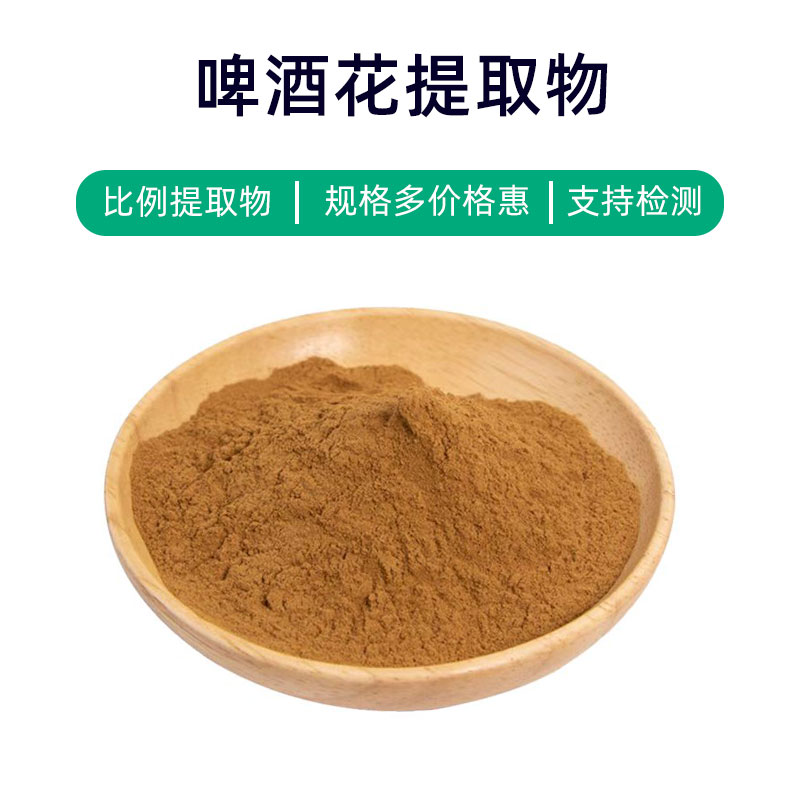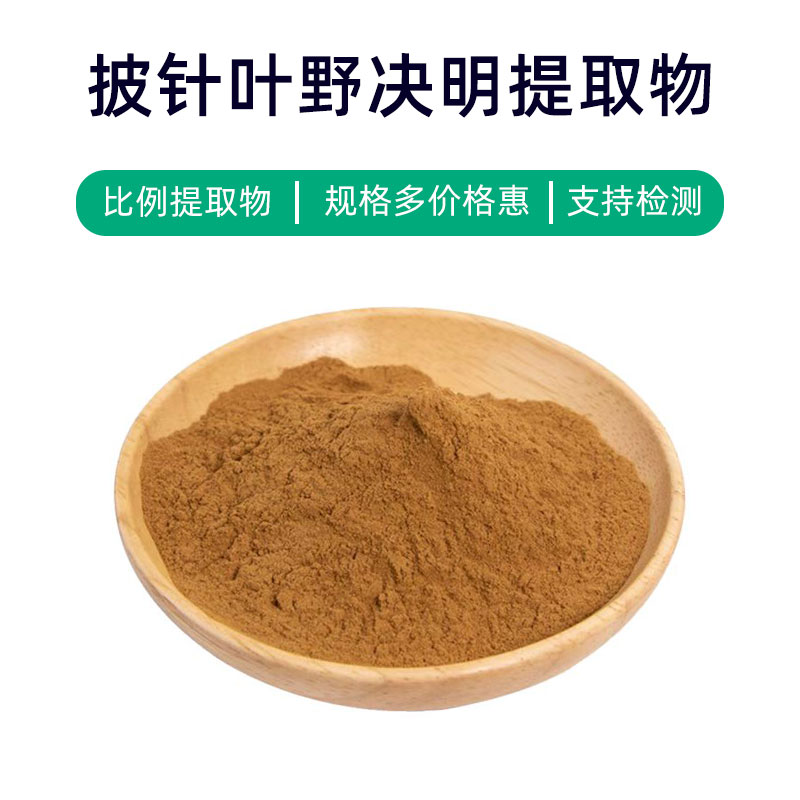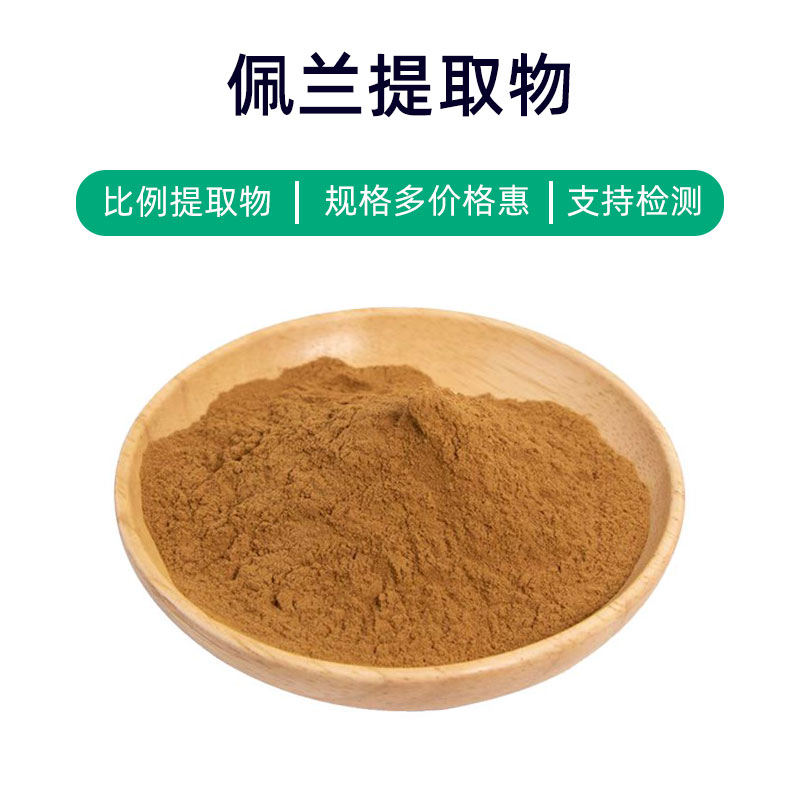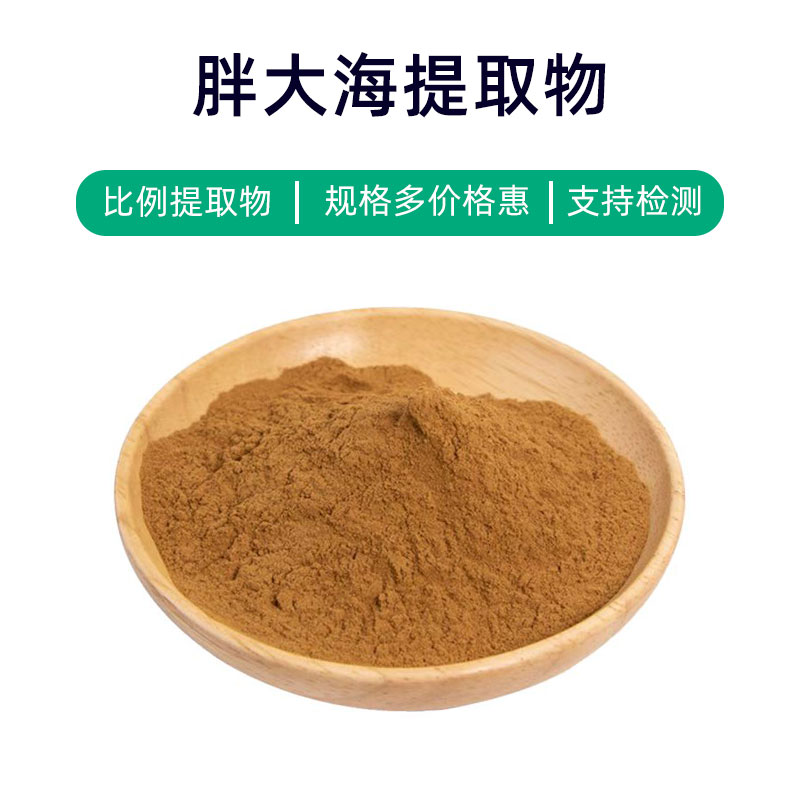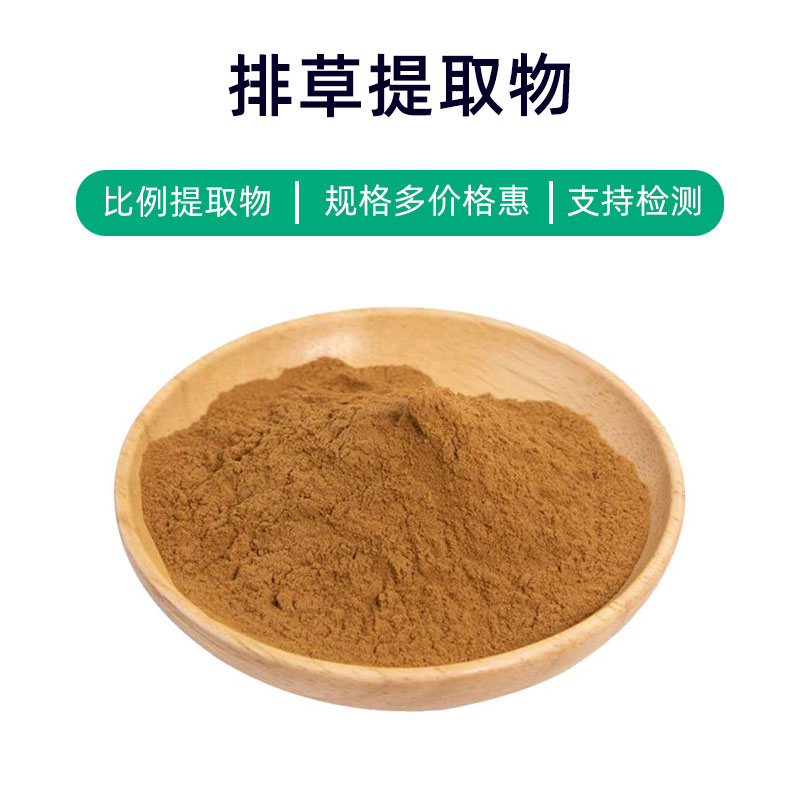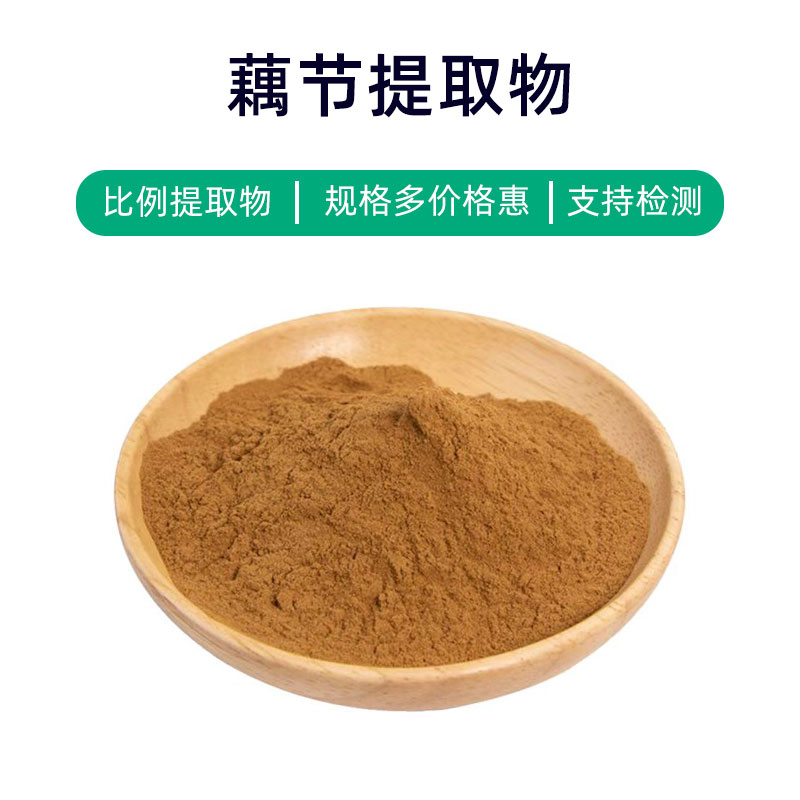Introduction to Schizonepeta Extract
Schizonepeta extract is a natural plant extract derived from the above-ground parts of the Schizonepeta plant. Its main components include volatile oils, flavonoids, and phenolic compounds. It finds widespread application in pharmaceuticals, dietary supplements, and cosmetics.
Its key benefits include antimicrobial, anti-inflammatory, anti-itch, and insect-repelling effects. The volatile oil components show strong antibacterial properties, making it useful for treating infectious skin conditions like eczema and sores. The flavonoids and phenolic compounds have anti-inflammatory and calming effects, helping alleviate skin inflammation and itching. Additionally, Schizonepeta extract is effective in repelling parasites, particularly in the case of roundworms and mosquitoes.
In the pharmaceutical field, Schizonepeta extract is commonly made into topical ointments, patches, or oral liquids to treat various skin diseases and respiratory infections. In dietary supplements, it is frequently processed into capsules or granules to boost immunity and improve respiratory health. In cosmetics, Schizonepeta extract is often added to skincare products to soothe the skin, reduce inflammation, and inhibit bacterial growth.
In summary, as a natural plant extract, Schizonepeta extract has a wide range of applications in pharmaceuticals, dietary supplements, and cosmetics, with its antibacterial, anti-inflammatory, and anti-itch properties making it an essential ingredient in many products.
Production Process of Schizonepeta Extract
The production process of Schizonepeta extract usually includes the following main steps:
- Raw Material Preparation: Fresh above-ground parts of the Schizonepeta plant are gathered, impurities are removed, and they are washed to ensure cleanliness and freshness.
- Grinding and Crushing: The cleaned Schizonepeta plant is ground and crushed to increase extraction efficiency and facilitate the extraction process.
- Extraction: The crushed Schizonepeta is mixed with an appropriate amount of extracting agent (such as ethanol or water) for extraction. The extraction parameters, including temperature, time, and solvent ratio, need to be determined based on product requirements and extract quality.
- Filtration: The extract is filtered to remove plant residues and impurities, resulting in a pure extract solution.
- Concentration: The filtered extract solution is concentrated, typically through vacuum concentration or evaporation methods, to obtain a concentrated Schizonepeta extract solution.
- Separation of Extract: Sometimes, further separation of the concentrated extract is needed to obtain purer Schizonepeta extract. Common separation methods include extraction, crystallization, and distillation.
- Drying: The separated Schizonepeta extract solution is dried, usually by spray drying, vacuum drying, or freeze-drying, to produce a powdered extract.
- Packaging: Finally, the finished Schizonepeta extract is packaged, typically in airtight packaging to prevent moisture or contamination, maintaining its quality stability.
This is the general production process for Schizonepeta extract, and specific parameters and procedures may vary based on the equipment and technology used by different manufacturers, requiring adjustments and optimizations as needed.
Efficacy and Side Effects of Schizonepeta Extract
As a plant extract with a variety of medicinal values, Schizonepeta extract has been widely used in both traditional Chinese medicine and modern pharmacology. Its main effects include:
- Antibacterial and Anti-inflammatory: Schizonepeta extract is rich in active ingredients with strong antibacterial and anti-inflammatory properties, effectively inhibiting the growth of bacteria, fungi, and viruses, and providing treatment benefits for infectious diseases.
- Clearing Heat and Detoxifying: Schizonepeta extract can help clear heat and detoxify, providing relief for symptoms such as fever, sore throat, and mouth ulcers caused by heat toxins.
- Dispersing Cold and Alleviating Pain: Schizonepeta extract has warming properties that disperse cold and relieve pain, suitable for symptoms of wind-cold colds, joint pain, and lower back pain.
- Expelling Wind and Dampness: Schizonepeta extract helps expel wind and dampness, improving symptoms related to rheumatic arthritis, eczema, and skin itching.
- Improving Respiratory Conditions: Schizonepeta extract provides auxiliary treatment for respiratory diseases such as bronchitis and asthma, helping to dilate bronchials and relieve coughing and phlegm.
- Promoting Wound Healing: Schizonepeta extract accelerates tissue repair and healing, providing support in the treatment of wounds and burns.
Generally, Schizonepeta extract is safe for use, but excessive or prolonged use may lead to side effects including dry mouth, nausea, vomiting, and skin allergies. Therefore, it is important to follow medical advice and avoid excessive or long-term use to prevent adverse reactions.
Overall, as a traditional Chinese medicine material, Schizonepeta extract holds significant medicinal value and has widespread potential applications in pharmaceuticals and dietary supplements. However, appropriate usage is essential to avoid adverse reactions.
Applications and Dosage of Schizonepeta Extract
As an important traditional Chinese medicine, Schizonepeta extract has a variety of applications and dosage recommendations, which primarily manifest in the pharmaceutical, food, and cosmetic sectors.
- Medical Applications:
Schizonepeta extract is widely used in various Chinese medicine preparations, such as granules, oral liquids, and topical patches. Common usage includes oral and topical applications. For oral use, the typical dosage for adults is 3-6 grams per dose, with adjustments for children; common forms include granules, pills, and oral liquids. For topical use, it can be formulated into plasters, ointments, or washes for treating wind-cold colds and rheumatic arthritis. Dosage generally varies based on specific medical conditions and medical advice. - Food Applications:
Schizonepeta extract can also be used as a food additive, serving as a natural plant extract with flavor-enhancing, preserving, and antibacterial properties. It is commonly found in spicy seasonings, sauces, and hot chili sauces. The amount added typically depends on the specific food type and requirements, complying with national standards and regulations. - Cosmetic Applications:
In cosmetics, Schizonepeta extract is utilized primarily in skincare products, offering antibacterial, anti-inflammatory, and antioxidant effects. Common products include creams, masks, and facial cleansers. Dosage is generally based on the product's formulation and effectiveness, typically ranging from 0.1% to 5%.
It is important to note that the application of Schizonepeta extract in different fields must comply with relevant legal regulations to ensure product quality and safety. During use, instructions on the product label or medical advice should be followed, with attention to individual differences and potential allergic reactions.
Introduction, Distribution, and Growth Environment of the Schizonepeta Plant
Schizonepeta (scientific name: Schizonepeta tenuifolia) is a common herbaceous plant belonging to the mint family and is an important member of traditional Chinese medicine. Below is a detailed introduction to the source plant of Schizonepeta extract, its distribution, and growth environment.
- Plant Introduction:
Schizonepeta is a perennial herb, characterized by a clumping root system and upright stems, typically growing to a height of 30-60 centimeters. Its leaves are opposite, lanceolate or ovate in shape, with irregular serrated edges. The flowering period is generally from June to September, with small, purple-blue or pale purple flowers arranged in a conical spike. - Distribution:
Schizonepeta has a wide distribution, primarily growing in regions such as the Yangtze River basin, Yellow River basin, and northern, northeastern, and southwestern China, with notably rich populations in provinces like Hebei, Shanxi, Shaanxi, Shandong, Gansu, Hubei, Hunan, and Sichuan. It is also found in Korea and Japan. - Growth Environment:
Schizonepeta prefers sunny, well-drained mountain grasslands, meadows, road sides, and wastelands. It is not picky about soil, tolerating drought and poor conditions, and is very resilient. It typically grows at elevations between 300 and 2000 meters, especially on slopes, hills, and foot of mountains. - Reproduction Method:
Schizonepeta primarily reproduces through seeds. When the flowering period arrives, the small achenes produced in the floral spikes will split open and disperse seeds. Additionally, Schizonepeta can also expand through underground rhizomes and branching, demonstrating strong growth capabilities.
In summary, Schizonepeta is a commonly found traditional Chinese medicine with a broad growth environment and distribution range, appearing in several regions of China. Its sun-loving, drought-resistant, and poor soil-tolerant characteristics enhance its adaptability, making it a commonly found wild herbaceous plant.
Processing and Storage of Schizonepeta Extract
The processing of Schizonepeta extract primarily involves harvesting, drying, grinding, extracting, filtering, concentrating, and drying. First, mature Schizonepeta plants are collected, washed, and dried to the appropriate moisture content. Next, the dried Schizonepeta is crushed and ground to enhance extraction efficiency. Then, an appropriate solvent is used for extraction, and the resulting extract is purified through steps such as filtering and concentrating. Finally, the extract is dried to reduce moisture content, ensuring stable quality. During storage, it should be placed in a cool, dry area, away from direct sunlight and dampness, to maintain the stability of its active components and quality.
Monica Sun is a seasoned expert in the plant extraction industry with over a decade of experience in research and production. She specializes in the extraction and purification of plant active ingredients, focusing on driving innovation in natural product applications. Monica has participated in the development of multiple functional plant extracts, delivering high-value natural raw material solutions for the health food, pharmaceutical, and dietary supplement sectors.









